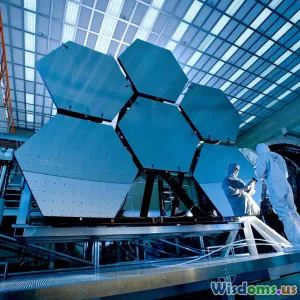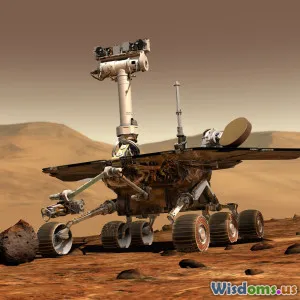
Why Do Space Suits Cost Millions to Produce
9 min read Explore why manufacturing space suits requires multi-million dollar investments, revealing the complexities and innovations behind their design and production. (0 Reviews)
Why Do Space Suits Cost Millions to Produce?
Picture this: an astronaut stepping onto the surface of the Moon or floating outside the International Space Station (ISS), encased in what looks like a high-tech, glowing armor. But what we often overlook is the staggering price tag behind these iconic space suits — each costing millions of dollars to produce. Why does such seemingly personal gear command an eye-watering expense? Understanding the cost of space suits is a fascinating journey into engineering complexity, human safety, and the unforgiving environment of space.
The Crucial Role of Space Suits
Space suits, or Extravehicular Mobility Units (EMUs), are much more than protective clothing. They are tiny, mobile spacecraft designed to provide astronauts with a life-sustaining environment in the vacuum of space. This involves complex interactions of pressure, temperature control, oxygen supply, waste management, and protection from micrometeoroids and radiation.
As NASA astronaut Chris Cassidy once said, "A space suit is your lifeline and home outside the spacecraft, so every detail matters."
Why So Expensive? An Overview
The multi-million dollar price stems from the following core factors:
- Specialized materials and manufacturing
- Advanced life-support and mobility systems
- Customization and testing
- Strict safety standards and redundancies
- Low production scale with high complexity
Let’s unpack these in detail.
1. Specialized Materials: The Fabric of Life
Space suits must withstand extreme conditions — from the freezing cold of space (about -250°F/-157°C) to blistering solar heat (up to 250°F/121°C). The materials chosen resist tears, abrasion, and tiny space debris moving at hypervelocity.
Layers of Protection
Each EMU is composed of about 14 layers, each performing vital roles:
-
Thermal Micrometeoroid Garment (TMG): The outer layers use a blend of materials like Kevlar, Nomex, and Gore-Tex fabrics that protect against micrometeoroids, space dust, and temperature extremes.
-
Pressure Garment Layer: Maintaining constant pressure (approximately 4.3 psi) to keep the astronaut’s body stable in vacuum conditions.
-
Comfort Layers: Fibers engineered for moisture absorption and impact resistance.
The fabrication and assembly of these fabrics involve highly specialized processes — from weaving Kevlar, used for bullet-resistant vests, to layered laminations resistant to temperature swings. Such advanced and rare materials are costly, requiring cleanroom facilities to avoid contamination.
2. Complex Life-Support Systems: The Spacesuit as a Mini Spacecraft
Unlike ordinary clothing, a space suit contains life support functionality equivalent to that inside a spacecraft:
Oxygen Supply and Carbon Dioxide Removal
An onboard Primary Life Support System (PLSS) delivers breathable oxygen, removes exhaled CO2, and regulates humidity. It also controls suit pressure and temperature through a water-circulated cooling system.
Waste Management
Integrated urine collection systems enable hours-long extravehicular activities (EVAs) without compromising comfort or hygiene.
Communication and Monitoring
Radio antennas, microphones, and biomedical sensors monitor vital signs in real-time and enable contact with mission control.
Developing and integrating these life support components into the compact and flexible suit design requires cutting-edge engineering, extensive testing, and fail-safe redundancies — all driving up costs.
3. Tailored Customization For Each Astronaut
Every astronaut has unique body dimensions and mobility requirements. To ensure optimal fit, comfort, and range of motion, space suits undergo comprehensive customization:
-
Custom Sizing: Technicians take thousands of measurements, then tailor pressure garments and joint bearings accordingly.
-
Adjustable Components: Modular parts like gloves, boots, and helmet assemblies can be swapped or adjusted to each astronaut’s mission and physical characteristics.
The rarity and precision required to handcraft and assemble custom suits further impact expenditures.
4. Rigorous Testing and Quality Assurance
When human lives depend on it, safety margins are non-negotiable. The suits undergo exhaustive tests:
-
Pressure Chamber Testing: To simulate vacuum conditions and ensure no leaks.
-
Thermal Vacuum Tests: Assessing performance across extreme temperature changes in space.
-
Mobility and Dexterity Trials: Making sure astronauts can perform complex tasks with gloves and flexible joints.
-
Durability Assessments: Testing resistance to micrometeoroid impacts, abrasion, and long-term wear.
These tests require expensive facilities, time, and specialized personnel.
5. Low Production Volume with High Precision
Unlike mass-market consumer products, space suits are built in extremely limited quantities. NASA estimates a single EMU production runs as few as a handful every few years. This low volume limits economies of scale, making every part and process expensive per unit.
Moreover, the known lifespan of a NASA EMU is around 15 years, increasing the need for regular maintenance and partial component replacement. These ongoing life-cycle costs add up.
Real-World Insight: The Cost Breakdown
In 2019, NASA reported that a single space suit costs about $12 million to manufacture. To put this in perspective:
- The life support system alone accounts for roughly $3 million.
- Materials and pressure garments are about $2 million.
- The gloves, often cited as one of the most intricate parts, cost over $250,000 each due to the need for dexterity and durability.
This price does not even include the helmet assembly, communication systems, or the significant overhead costs inherent to aerospace engineering.
Emerging Innovations and Cost Reduction Prospects
The cost barrier has fueled innovation. For example:
-
SpaceX's suit, designed for commercial astronauts, reportedly costs significantly less by leveraging modern materials, simplified designs, and mass-production techniques.
-
The xEMU (Exploration Extravehicular Mobility Unit) project by NASA aims to enhance mobility and durability for lunar missions but maintains stringent safety requirements, keeping costs high.
-
Research into 3D printing components and novel fabrics might reduce future expenses.
An article in The Verge highlighted how SpaceX’s suit costs under $1 million, compared to NASA’s traditional $12 million models, illustrating how evolving design philosophy impacts pricing.
Conclusion: Million-Dollar Cost for Priceless Safety
Space suits are marvels of human ingenuity designed to save lives in one of the most hostile environments imaginable. The millions spent reflect the intensive research, advanced materials, customized manufacturing, life-support systems, safety rigor, and limited scale of production.
Far from frivolous expenses, these suits enable astronauts to explore, research, and push beyond Earth’s boundaries safely. As technology advances and commercial spaceflight grows, we may see more affordable designs emerge — but the profound complexity of space suit engineering means millions remain the necessary investment for life in space.
References
- NASA’s EMU Fact Sheet
- NASA Technical Reports Server (NTRS)
- The Verge: SpaceX spacesuit vs NASA coverage
- Interviews with former NASA astronauts and aerospace engineers
Ready for future space exploration? Understanding the costs behind space suits offers insight into the technological triumphs keeping humanity safe beyond Earth.
Rate the Post
User Reviews
Popular Posts


















